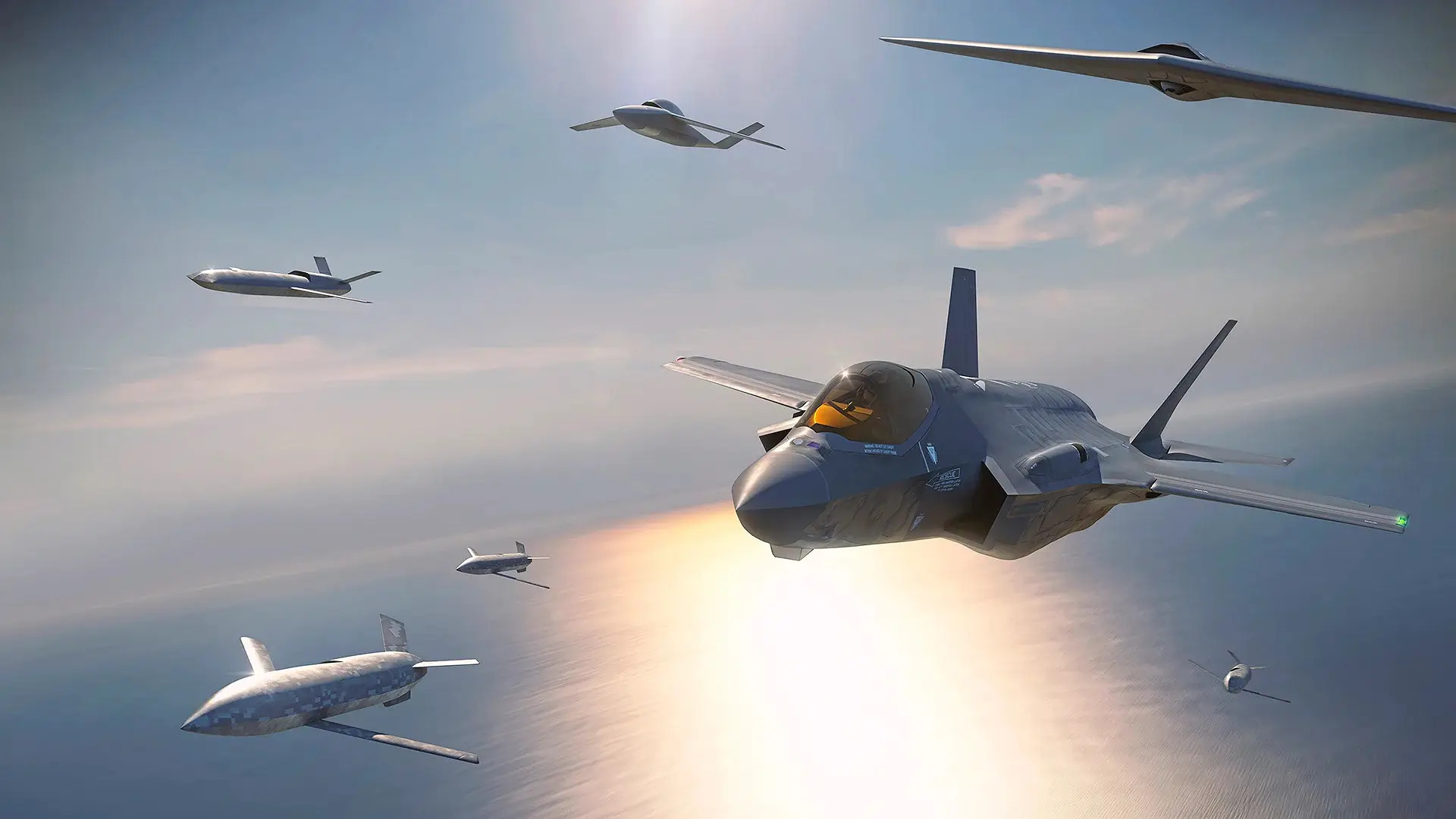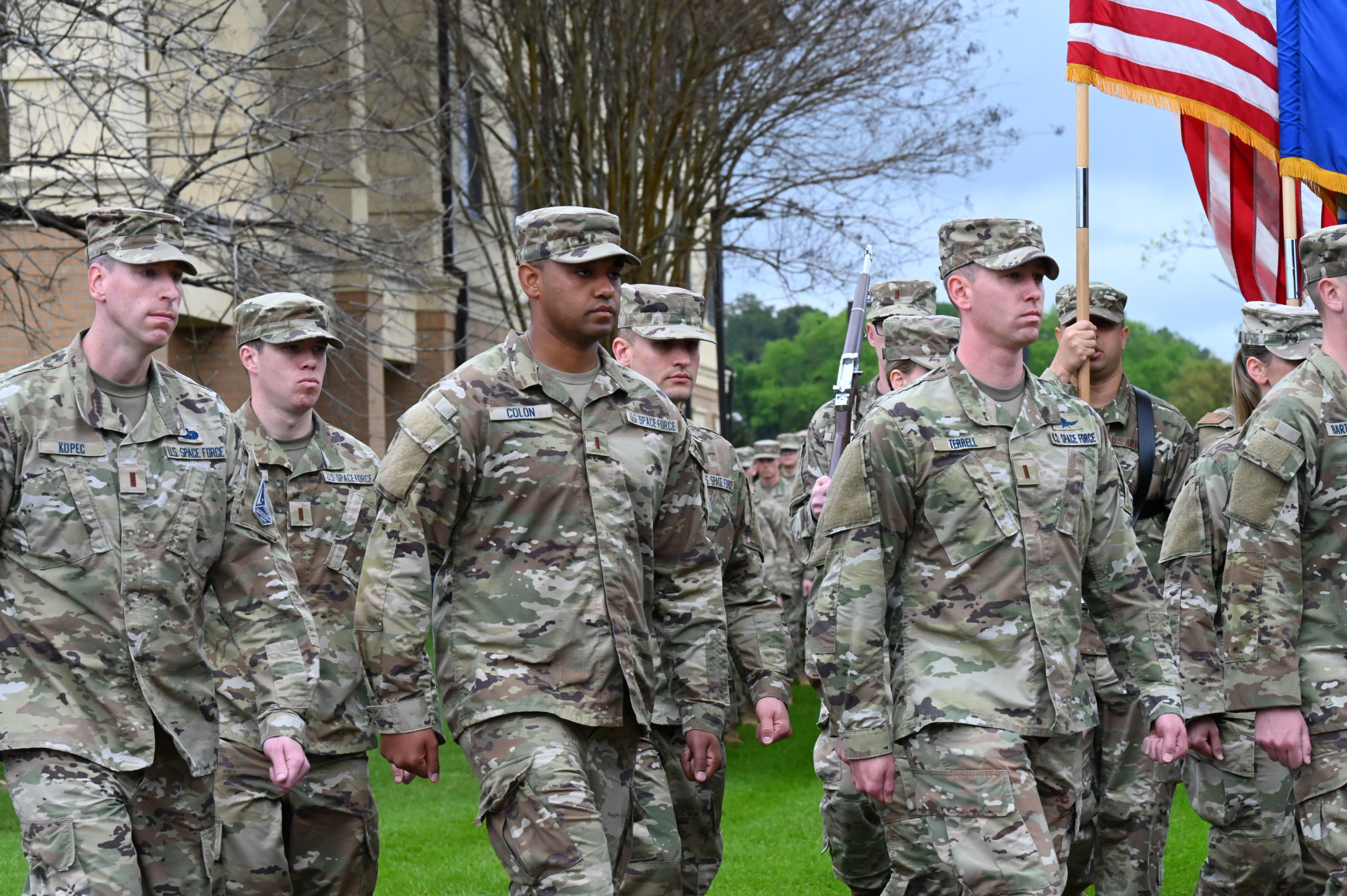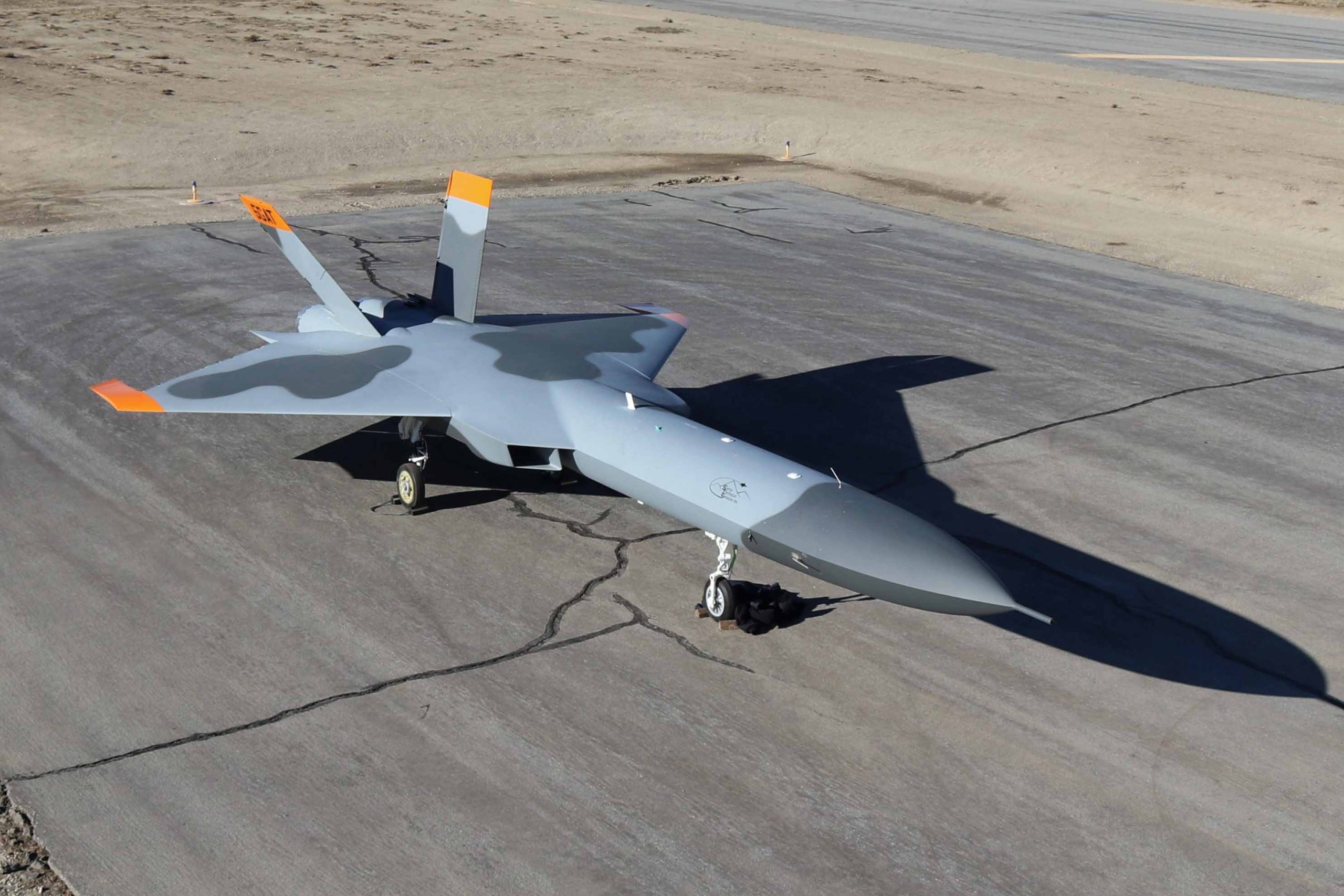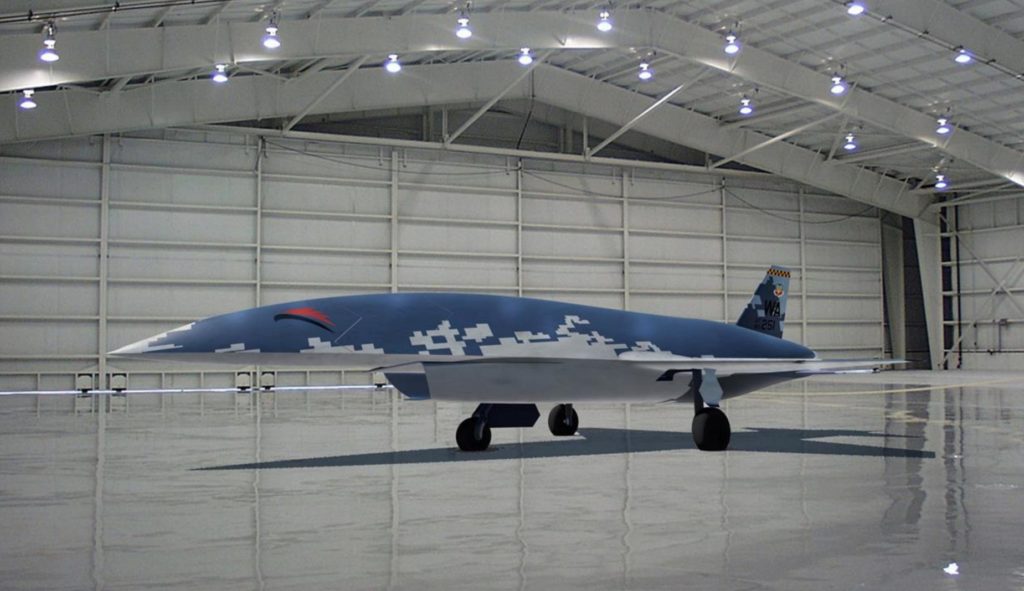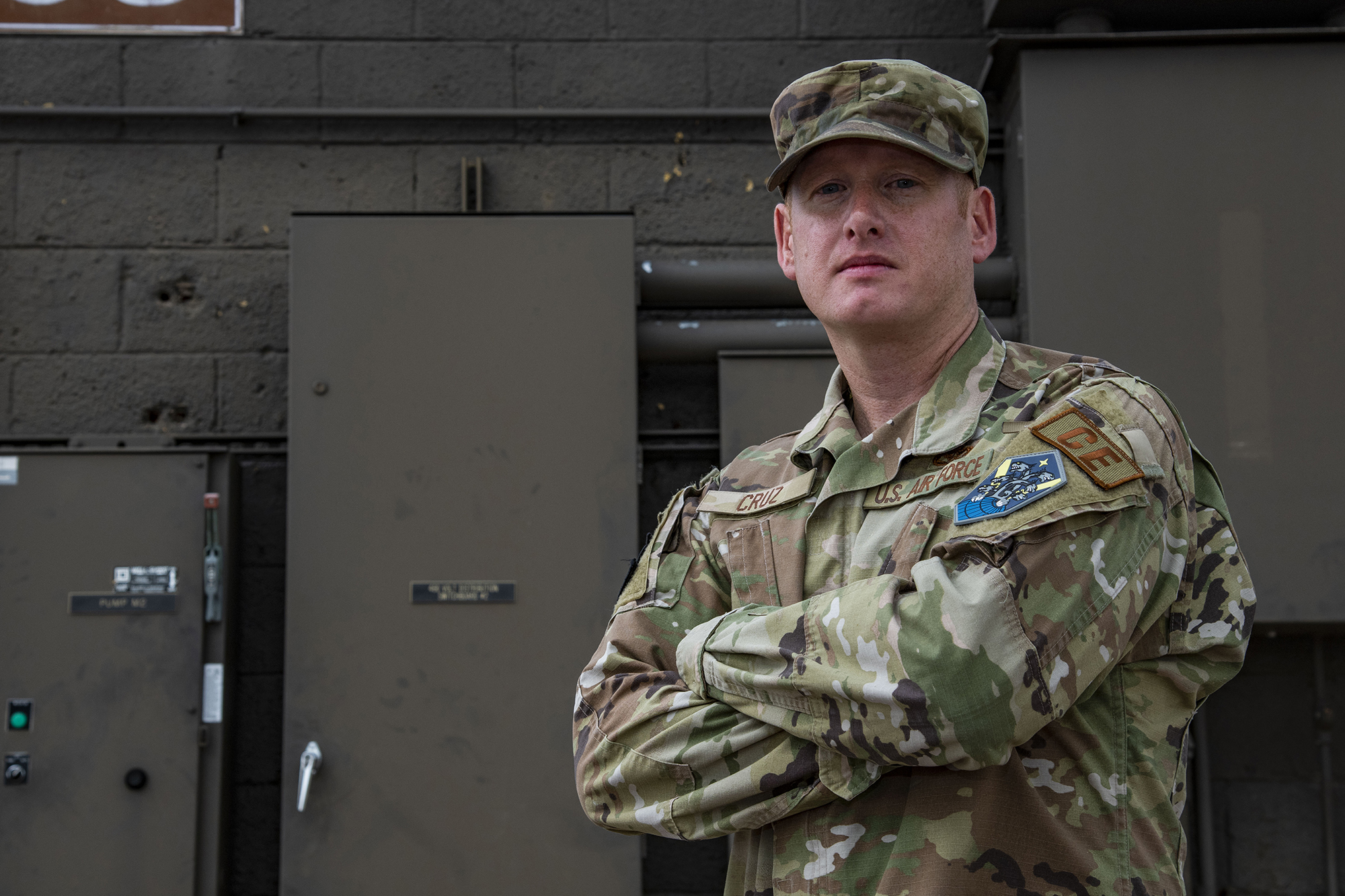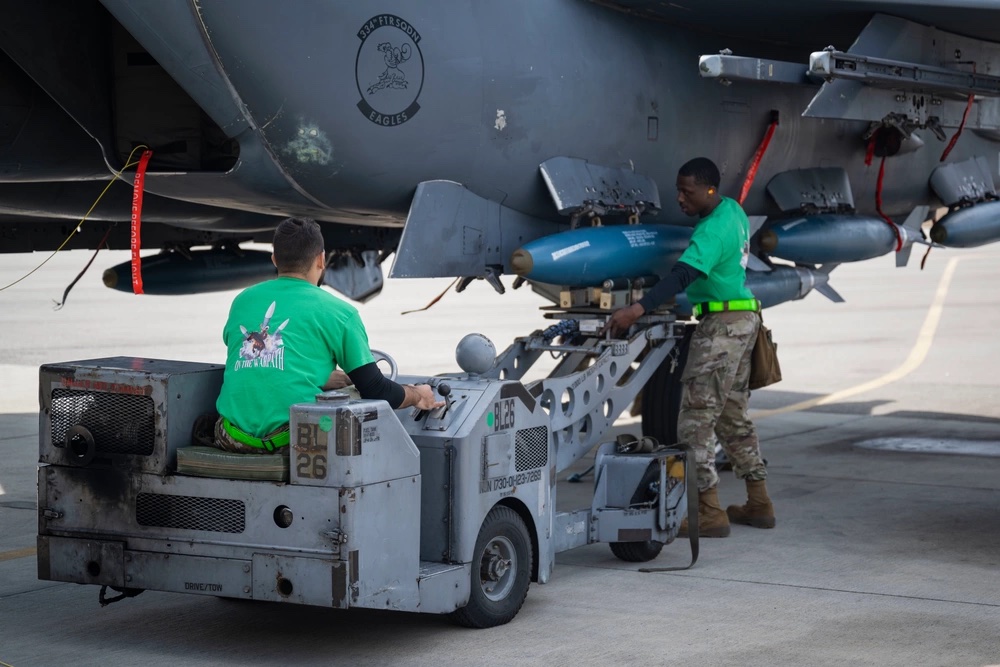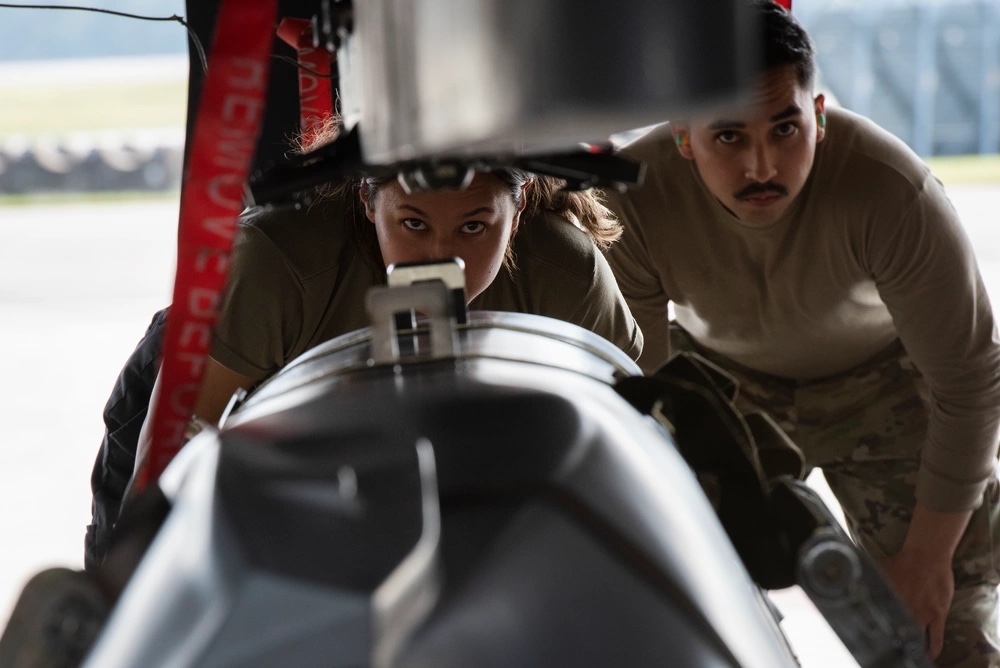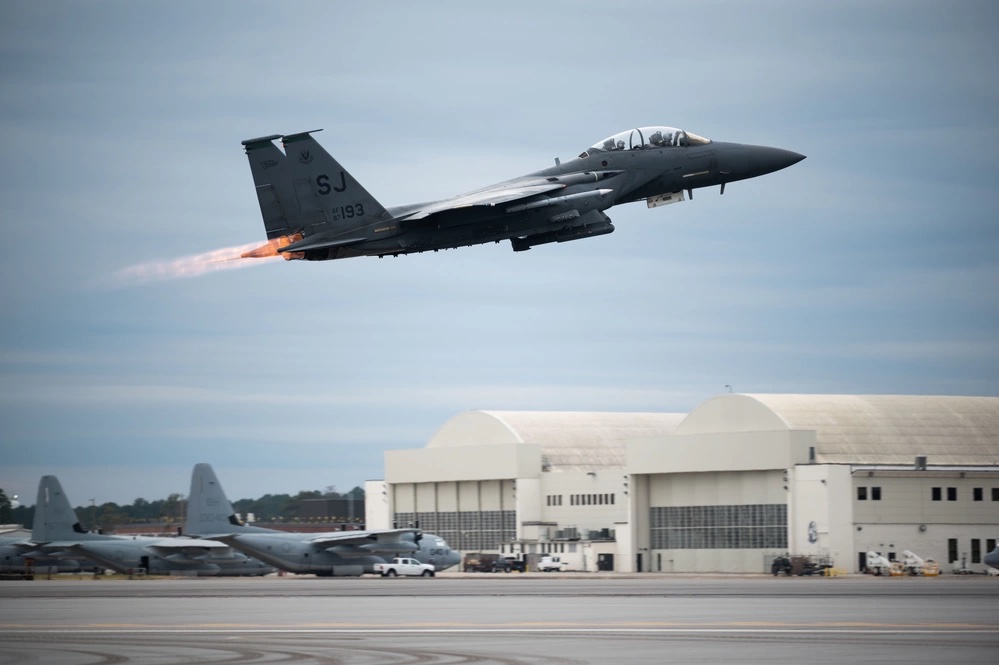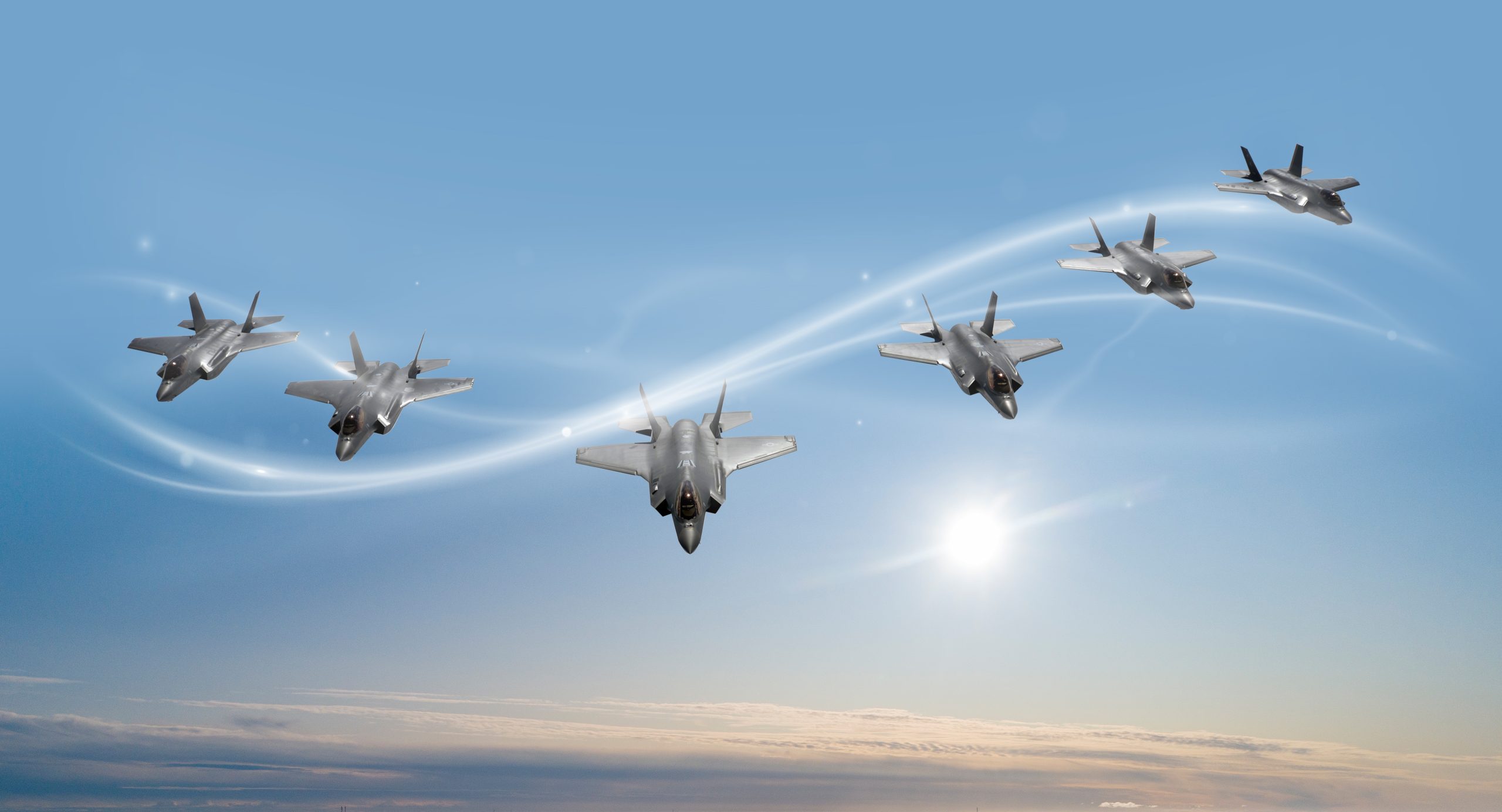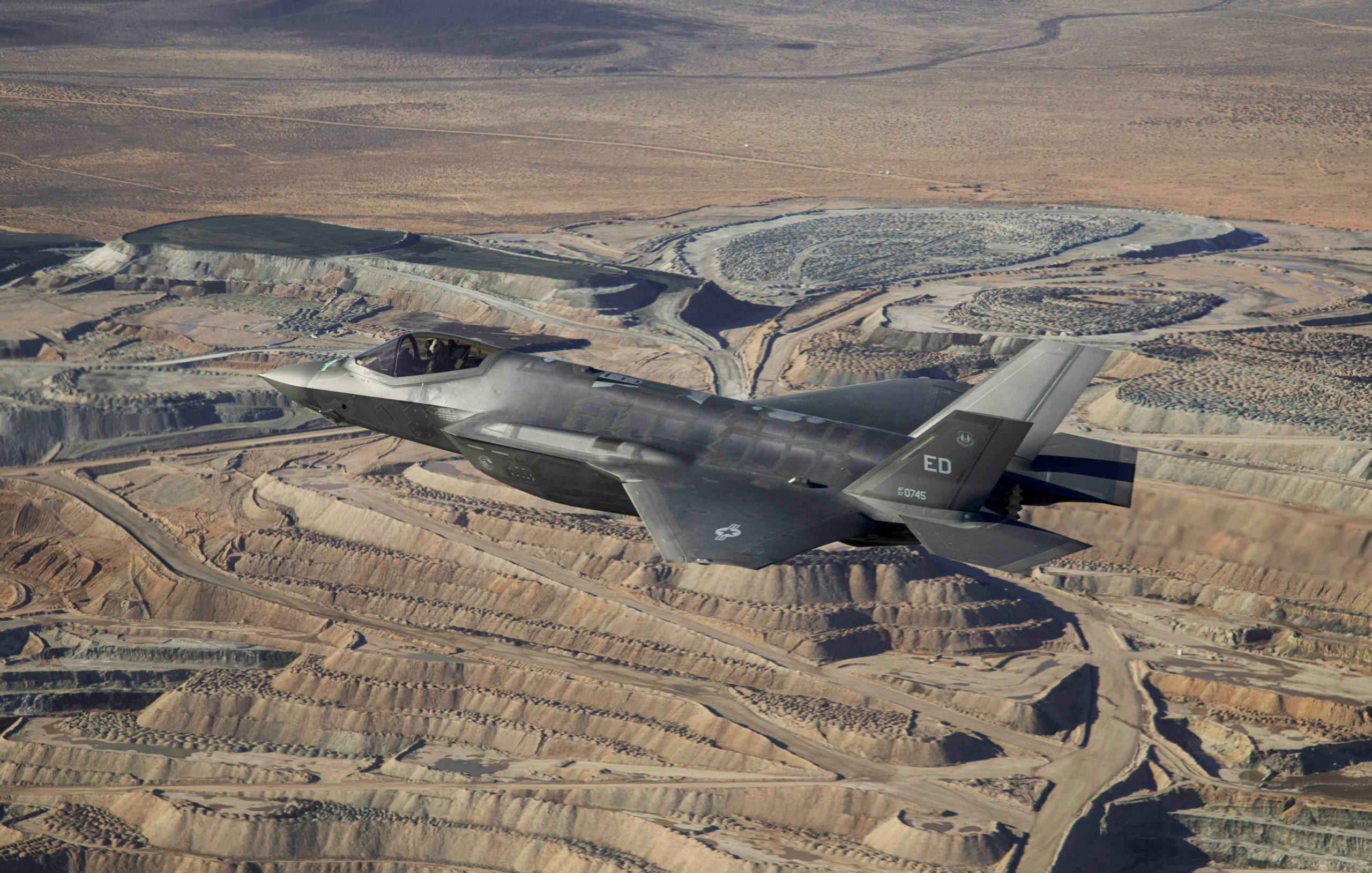Collaborative Combat Aircraft, the unmanned autonomous aircraft the Air Force plans to spend billions on in the coming years, could extend the operational reach of the crewed combat fleet and offer affordable mass. But the service is looking beyond just kinetic missions for CCAs, two of its top leaders said this week.
Gen. Mark D. Kelly, head of Air Combat Command, and Lt. Gen. James Slife, deputy chief of staff for operations, said at a Defense News conference Sept. 6 that CCAs offer a host of options for the combat air forces and in other mission areas. The service is still working to define “what they will do, and what they won’t do,” Kelly said.
“What problem are you trying to solve?” Kelly asked rhetorically. The low-cost autonomous aircraft will offer capacity and mass in a peer fight but will also offer a boost in expansive theaters like the Pacific, where they can extend the sensing and shooting capability of crewed fighters and bombers, he said.
A fighter-CCA team could allow a manned fighter to travel to the limit of its range, or “I have the option of sending it 75 percent of that distance and let the CCA go further, and solve some of that range problem. That helps a ton,” Kelly said.
Such a tactic would mean “that fighter can stay on station quite a bit longer, because it’s not going to the limits of endurance and distance. It’s also helped me solve the second thing, which is risk,” Kelly noted—more CCAs forward will absorb the attention and firepower of the enemy, reducing the risk to the crewed fleet.
“We are calculating” the numbers that wring the most capability out of that equation, Kelly added. Air Force Secretary Frank Kendall has set a notional fleet size of 1,000 drones, but that number could very well change.
More CCAs forward also means more sensing and communications nodes, crucial for creating resilient communications that can degrade gracefully, Kelly said.
The network also streamlines the kill chain, Kelly said. In the past, fighter pilots would have to make sense of the tactical environment from a variety of separate sensors and “synergize” all that information in their heads, Kelly explained.
“We’re no longer there. And so CCAs have to plug into a synergistic environment to where the detection of an adversary, the track custody, the identification, the weapons employment, the assessment is going to be done by six or seven different entities, probably in many different domains,” Kelly said. “And they’ve got to plug straight into that. And that goes kind of back to the to the resilient comms out there.”
The modern battlespace means “we have to make sure we have a ton of sensing going on, again, across the [electromagnetic spectrum] and contributing to the overall picture,” Kelly said. CCAs in large numbers will make that possible, he added.
This issue of autonomy is also “not new” in the Air Force, and shouldn’t be a contentious notion, Kelly also argued, pointing to the MQ-9 and Global Hawk drones that can take off and land by themselves and chart their own courses.
And in weapons, Kelly said, autonomous systems have been used “for decades.” The AIM-120 AMRAAM missile, he noted, is initially pointed toward the target and launched, and it will “go where we tell it to go, it will look for who we tell it to look for.” At some point, though, “it hangs up on us. It says, ‘hey, thanks for the help. I will continue on this all by myself,’ and does its autonomous processing, autonomous flight profile, autonomous target selection, autonomous engagement.”
If the launching aircraft has to leave the fight before then, the missile can become autonomous earlier, he said.
As the Air Force works to advance CCAs, service leaders regularly meet with their Navy counterparts, Kelly said, to harmonize their concepts for CCAs, discussing requirements and cost issues like, “What’s the priority for sensing? … What are the tradeoffs we’re going to make in terms of range and payload and sensing?”
Such discussions echo those from the 1990s, “where the services got together and probably discussed and probably disagreed and bantered about what are the attributes and tradeoffs for a joint program like the F-35,” Kelly said.
Perhaps most crucial to those talks, however, is making sure CCAs of both services can interoperate and use common communications.
Kelly said he wants to see a similar solution to “what we did with the MADL (Multifunction Advanced Data Link) waveform, which is the waveform used on all F-35s—not just Navy or Marine, it’s also our allies and partners that use the same MADL waveform,” Kelly said.
Users collectively need to ensure “we don’t beam off and have CCAs who can’t talk to fellow CCAs, whether it be another service or whether it be one of our allies and partners,” he added.
Mission Sets and Modularity
Within the Air Force, how to organize CCAs is the subject of heavy discussion among leaders, said Slife, as they look beyond kinetic functions in the air battle.
“How we organize them will ultimately affect how we think about their utility, and what they what can be done with them,” said Slife, who was just nominated to be the next Vice Chief of Staff.
“At the end of the day, all airplanes are just airplanes. … They have different attributes. They have different range, speed, payload, propulsion systems, signatures,” he added. “Those are all just attributes of airplanes, and we call some of them fighters and we call some of them airlifters and we call some of them tankers, but at the end of the day, they’re just airplanes.”
With that mindset, the possible uses for CCAs expands dramatically.
“What would we do with CCAs? Might it be able to do resupply in a contested area? It probably will, but if you make CCAs organic to our current fighter squadrons, you’re probably not going to be thinking about how we use them for resupply,” Slife said. “If you make them organic to a C-17 squadron, we’re probably not going to think about how they can be used for some of the missions that Gen. Kelly highlighted
“How we think about the organization of CCAs and whether we want to specialize them for certain types of missions, depending on their attributes, I think is really the place that’s kind of ripe for experimentation. So I think those will be some of the interesting questions in the years ahead,” Slife said.
Asked about bomber CCAs or dedicated transport CCAs, Slife said pointed to the forthcoming B-21 Raider and Next-Generation Air refueling System (NGAS) as aircraft that may theoretically from CCAs.
“We should keep our options open for how we employ them going forward,” Slife said.
In addition to different kinds of CCAs, some experts and officials have called for the drones to be modular—able to do an attack mission one day, a jamming mission the next. Kelly expressed openness to the concept but “with a caveat.”
He said that the price of CCAs will determine how much “flex” they have to swing from one mission to another.
“If you look at the size, weight and power, we very likely will be into arenas where we have to choose,” Kelly said. A CCA may only be able to do one kind of mission per day, given the time and effort involved to change out its mission equipment.
At a higher price point, “you get to a different … scenario, much like an F-35. We don’t tell an F-35, ‘today you’re going to jam this particular waveform, and tomorrow, you’re going to sense, and the third day you’re going to shoot.’ No, they actually flex to what they need to do.”
CCAs would have that flexibility “in a perfect world … not constrained by resources,” Kelly said. In reality, the number, capability and flexibility of CCAs will have to be balanced “as to size, weight, power and cost. … But I think we’ll iterate our way there.”
